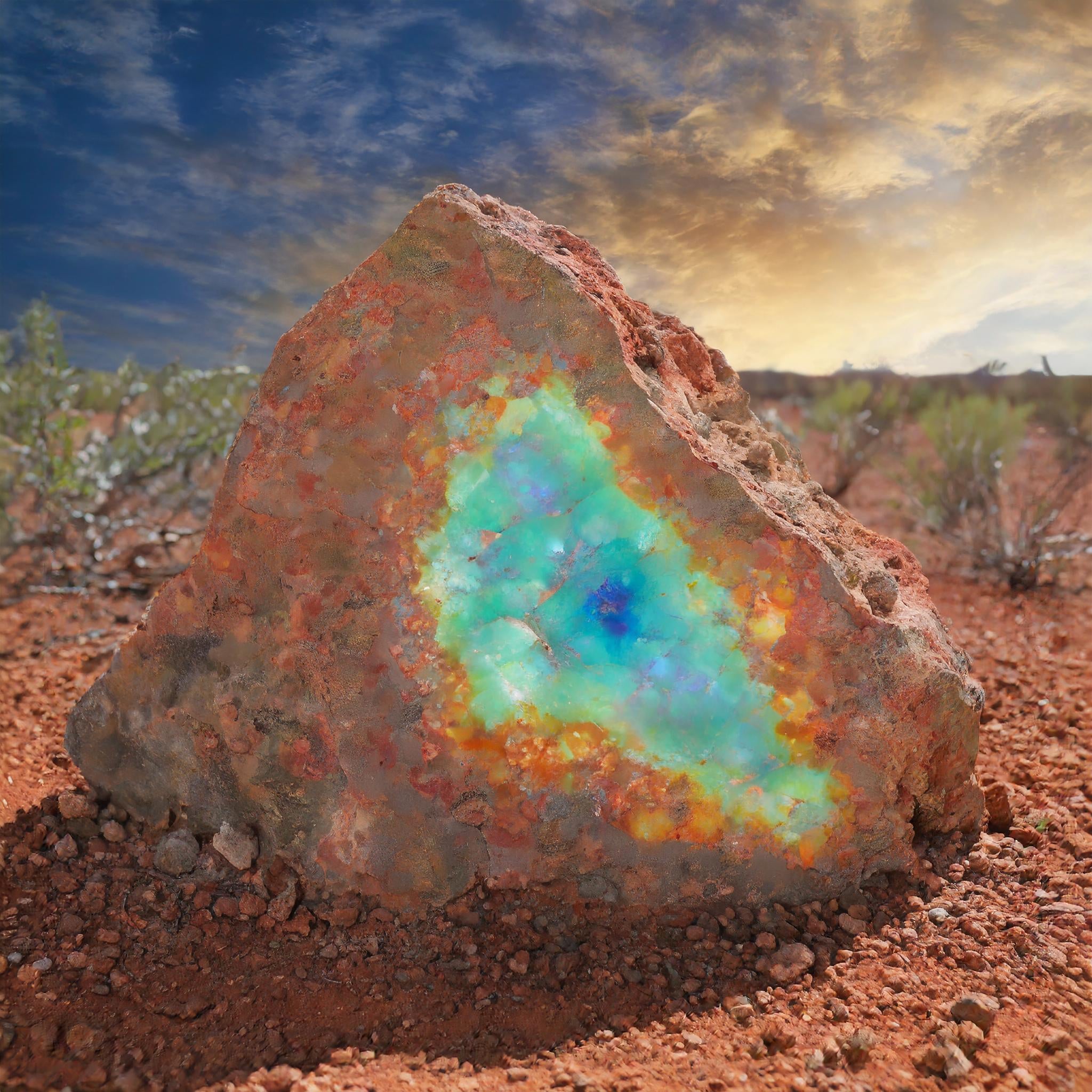Australia, a land of diverse landscapes and rich history, is renowned for its opals, a gemstone that captures the imagination with its vibrant play of colors. This gemstone, beyond its physical allure, is woven deeply into the fabric of Australia's geological narrative and its indigenous cultural heritage. This blog post delves into the scientific formation of Australian opals and explores the enchanting aboriginal folklore surrounding its origin.
The Scientific Genesis of Australian Opals
Opals are formed through a fascinating geological process that dates back millions of years, during a period when much of Australia's landscape was covered by an inland sea. The story begins with the evaporation of this ancient sea, which left behind a rich layer of silica-rich sediment. Over time, water carrying dissolved silica percolated through the earth, filling cracks and voids in the sedimentary layers. As the water evaporated, it left behind deposits of silica gel. These deposits, under the immense pressure of the earth and through the gradual process of dehydration, transformed into the precious opal.

Australia's unique geological conditions, particularly in regions like Coober Pedy, Lightning Ridge, and Andamooka, have made it the world's leading producer of opals. The Great Artesian Basin, a vast underground water reservoir stretching over much of Australia, played a crucial role in this process. It served as the source of the silica-rich waters that formed the opals, giving rise to a variety of opals including the famed black opal, white opal, and boulder opal.

Aboriginal Folklore and the Dreamtime Opals
The Aboriginal people of Australia have their own explanations for the origins of opals, deeply rooted in their spiritual beliefs and stories of the Dreamtime. Dreamtime is the central theme in Aboriginal culture, a time of creation when ancestral spirits roamed the earth, shaping its landscapes and creating its laws.
One of the most captivating tales comes from the indigenous people of the Andamooka area. They believed that the creator came down to Earth on a rainbow, infusing the rocks with the vibrant colors of the opal as a sign of peace. This story illustrates the opal's significance not just as a physical object but as a symbol of the profound connection between the land, its people, and the universe.
Another legend from the Lightning Ridge area tells of a gigantic opal that was the embodiment of the rainbow's spirit. It was believed that when the spirit touched the earth, it imbued the stones with an eternal fire, creating the first opals. These stories reflect the deep spiritual significance of opals, seen as a bridge between the earthly and the divine, and a reminder of the ancestors' enduring presence.

Conclusion
The origin of Australian opals is a tale of two worlds: the scientific and the spiritual. On one hand, the geological process of their formation tells a story of ancient seas, silica deposition, and the transformative power of nature. On the other, Aboriginal folklore offers a window into the soul of Australia, where opals are more than just stones; they are the vibrant links to the Dreamtime, carrying the essence of creation and the spirits of the ancestors. Together, these narratives weave a rich tapestry that highlights the beauty, mystery, and cultural significance of Australian opals, making them a gemstone like no other.

